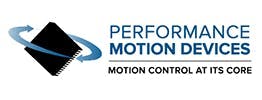Interestingly, the sensing function may not require a separate physical hardware device. It may instead be achieved by electronics that measure current flow through the actuator coils with high precision thereby allowing a sensed torque to be inferred. This paper focuses on servo actuators that function as end effectors, often mounted on transport systems such as robotics arms and gantries. These devices include linear actuators, force feedback actuators, voice coils, and more. Understanding their capabilities and properties will help ensure that your next application delivers the goods without dropping the ball!
This content is sponsored by:

